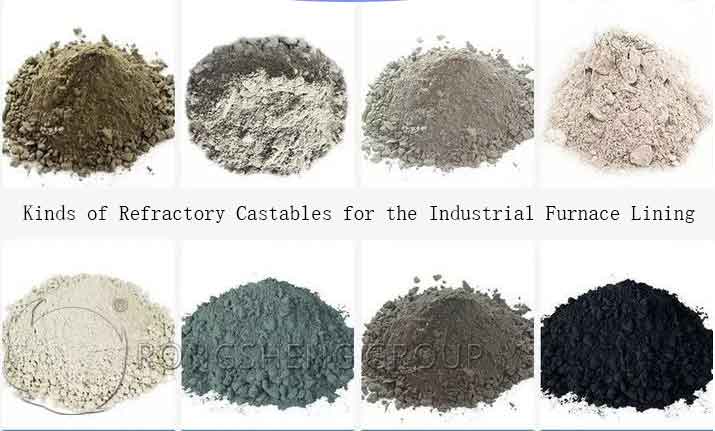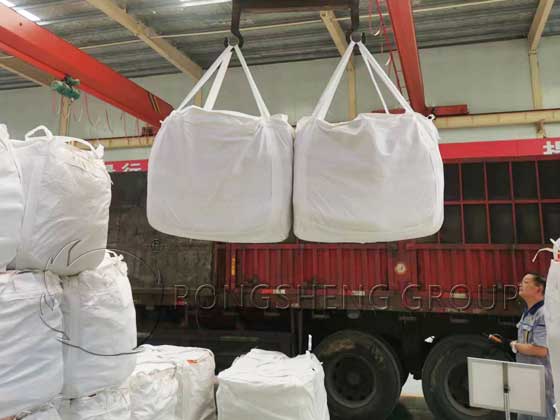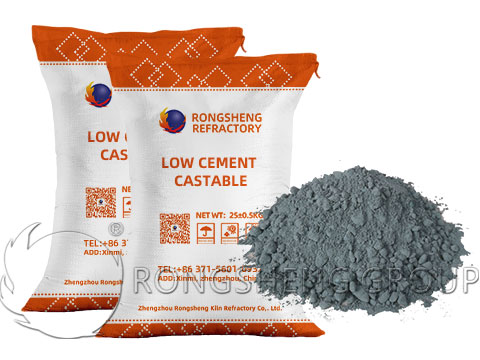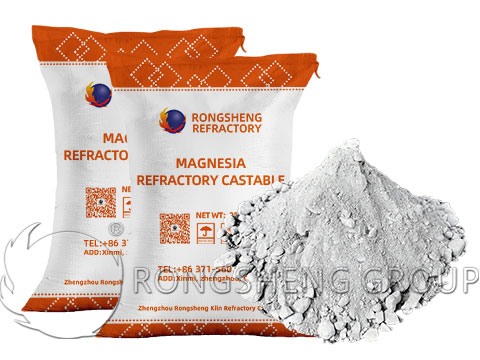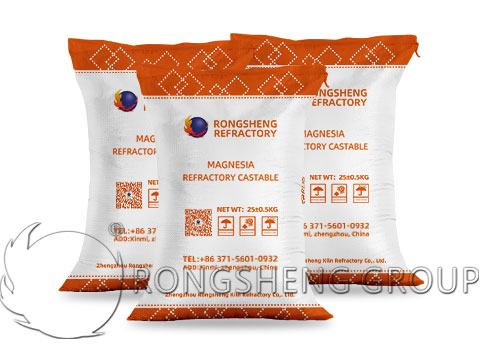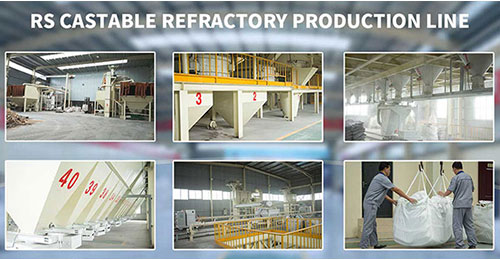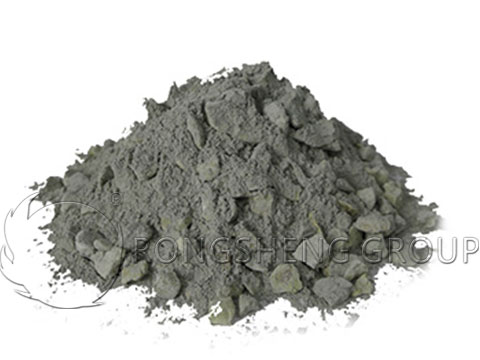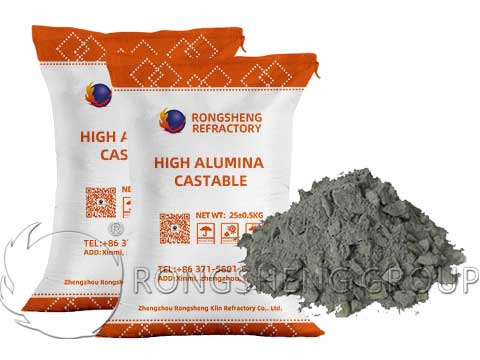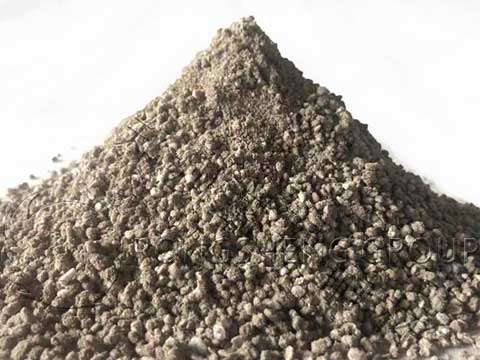Refractory castable for heating furnace roofs is a kind of refractory material specially designed for heating furnace roofs. It is used to protect the structure inside the furnace body, reduce heat loss and increase the service life of the furnace. Refractory castables have the advantages of high compressive strength, wear resistance, corrosion resistance, and good thermal stability, so they are widely used in the manufacture and maintenance of heating furnace roofs. Rongsheng refractory castable manufacturer can customize Refractory Castable Precast Shapes for Heating Furnace Roofs for customers. The mold size is accurate, and the quality of the refractory castable precast shape is reliable and guaranteed.
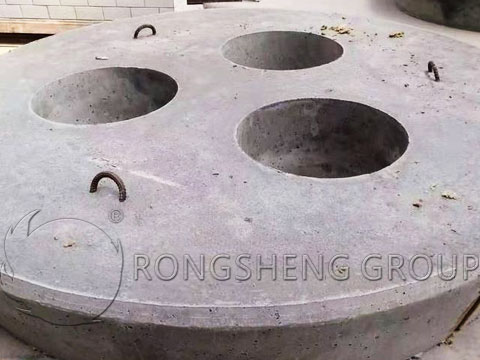
Refractory Castable Precast Shapes for Heating Furnace Roofs
In industrial kilns and thermal equipment, using castable refractory precast shapes to build furnaces can realize mechanized installation, save labor and labor, shorten the construction period, and improve furnace building efficiency. Castable refractory precast shapes are widely used in blast furnaces, hot blast stoves, heating furnaces, electric furnace roofs, iron ore powder roasting shaft furnaces and pellet roasting furnaces, and other industrial kilns masonry. The lining speed is fast, it can be used without baking, and the service life is long. Castable refractory precast shapes can be poured into precast shapes of various materials and shapes can according to construction needs and drawing design.
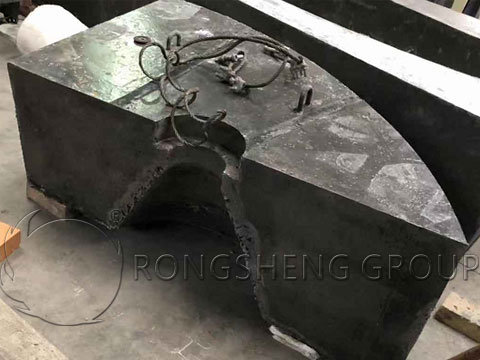
Main components and characteristics of refractory castables for heating furnace top precast shapes
main ingredient
The main components of precast shapes refractory castables include refractory aggregates, refractory binders, refractory fillers, and some additives. Among them, the refractory aggregate generally adopts materials with high refractoriness such as blast furnace ore, brown corundum, and corundum. The refractory binder can choose aluminum silicate cement, phosphate cement, and so on. Refractory fillers are mainly refractory fibers, lightweight refractory castables, etc. Additives mainly include waterproofing agents, precipitation agents, etc. to improve the performance of castables.
Compressive strength
The precast shapes refractory castables have high compressive strength and can withstand large mechanical loads. This enables the furnace roof to maintain good stability and service life under long-term high-temperature conditions.
wear and corrosion resistant
The precast shapes refractory castables have good wear resistance and corrosion resistance. It can resist the erosion of materials and gases in the furnace under high temperatures, and protect the internal structure of the furnace body.
thermal stability
Precast shapes refractory castables have good thermal stability. It can withstand high temperature and temperature fluctuations, prevent the roof from cracking due to thermal expansion and contraction, and prolong the service life of the furnace roof.
construction performance
The precast shapes refractory castables have good construction performance. The construction can be carried out by pouring, spraying, or wet spreading, which makes the production and maintenance of the furnace roof more convenient and quick.
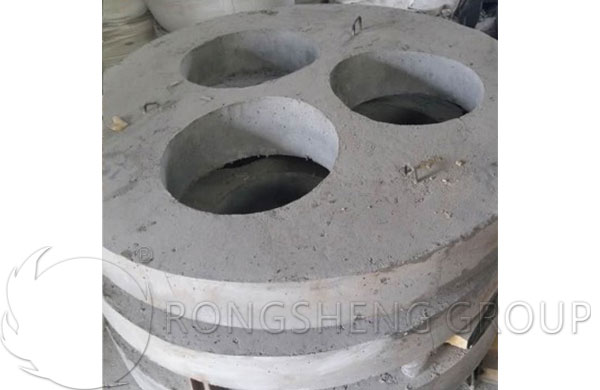
Requirements for the use of precast shapes refractory castables for heating furnace roof
Refractory castables for heating furnace roofs have strict requirements in terms of material selection, design, and construction to ensure that their performance and service life can meet the expected goals. The following are the requirements for the use of precast shapes refractory castables for heating furnace roofs.
- Material selection
When selecting refractory castables, appropriate refractory aggregates, binders, and fillers should be selected according to the working environment and requirements of the heating furnace. In addition, factors such as thermal conductivity and thermal expansion coefficient of the castable should also be considered to ensure good performance under high-temperature conditions.
- Design
When designing the furnace roof, factors such as temperature distribution, heat loss, and thermal stress in the furnace should be fully considered in order to reasonably select the type and thickness of the refractory castable. At the same time, the structural design of the furnace roof should also be considered to improve the overall stability and service life of the furnace roof.
- Construction
During the construction process, the operation should be carried out in strict accordance with the technical requirements provided by the refractory castable manufacturer to ensure that the castable is fully stirred evenly and the pouring compaction is good. Air bubbles and slag inclusions should be avoided during pouring to ensure the compactness and refractory performance of the furnace roof.
- Maintenance
After the pouring is completed, the furnace roof should be properly maintained to ensure the strength and stability of the refractory castable. Conservation methods include wet cultivation, natural conservation, etc. During the maintenance process, the furnace roof should be prevented from being damaged by external force to ensure the integrity of the furnace roof.
- Repair and maintenance
During the operation of the heating furnace, the condition of the furnace roof should be checked regularly, and problems should be dealt with in time. If the furnace top is found to be partially damaged, it can be repaired by partial repair. If the overall damage to the furnace roof is serious, it should be considered to replace the furnace roof.
In a word, refractory castables for heating furnace roofs play a key role in protecting the internal structure of the furnace body, reducing heat loss, and prolonging the service life of the furnace. Choosing the right refractory castable and strictly following the construction and maintenance requirements can ensure the performance and service life of the heating furnace roof to the expected level. Rongsheng refractory material manufacturer has rich experience in production and sales. The quality of precast shapes refractory castables for heating furnace roofs is reliable. At the same time, Rongsheng manufacturers can provide customization of refractory castable materials to meet the needs of heating furnace lining materials. Customized refractory lining material solutions, free design of refractory materials for high-temperature kiln insulation layer. Contact us to enjoy free benefits.

